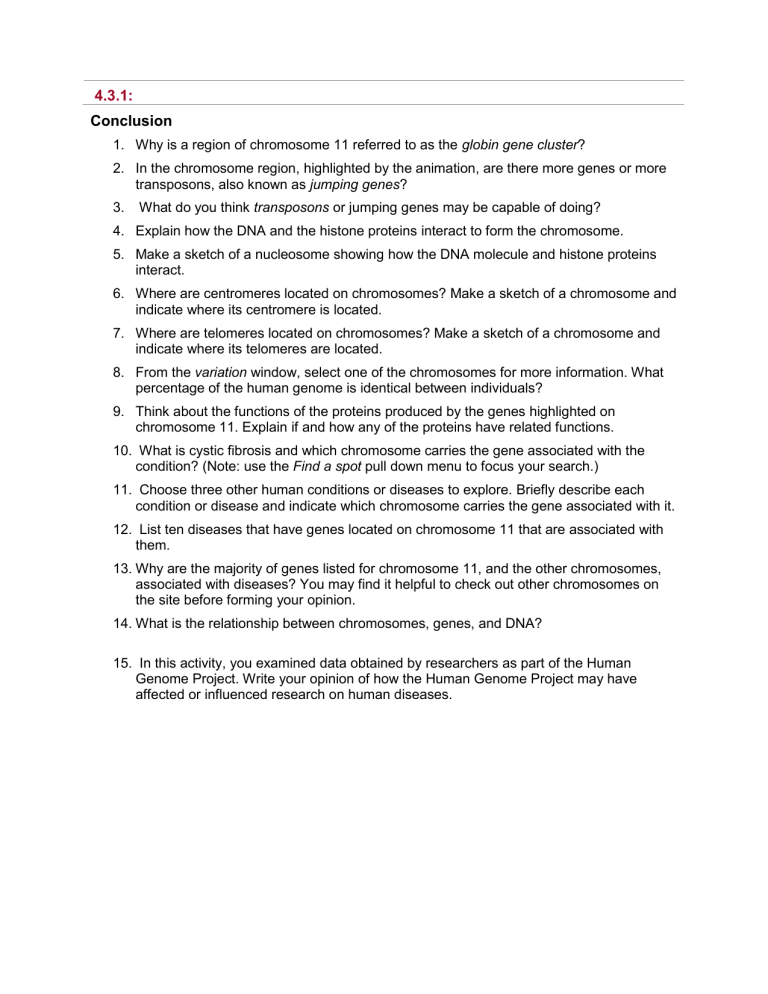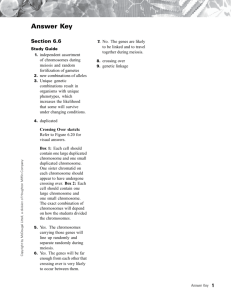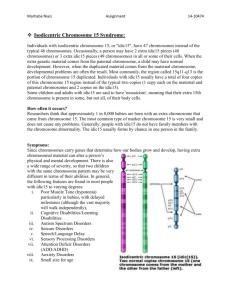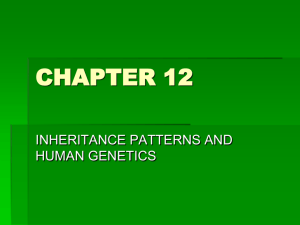C4.3.1 - angeladjohnson

4.3.1:
Conclusion
1. Why is a region of chromosome 11 referred to as the globin gene cluster ?
2. In the chromosome region, highlighted by the animation, are there more genes or more transposons, also known as jumping genes ?
3. What do you think transposons or jumping genes may be capable of doing?
4. Explain how the DNA and the histone proteins interact to form the chromosome.
5. Make a sketch of a nucleosome showing how the DNA molecule and histone proteins interact.
6. Where are centromeres located on chromosomes? Make a sketch of a chromosome and indicate where its centromere is located.
7. Where are telomeres located on chromosomes? Make a sketch of a chromosome and indicate where its telomeres are located.
8. From the variation window, select one of the chromosomes for more information. What percentage of the human genome is identical between individuals?
9. Think about the functions of the proteins produced by the genes highlighted on chromosome 11. Explain if and how any of the proteins have related functions.
10. What is cystic fibrosis and which chromosome carries the gene associated with the condition? (Note: use the Find a spot pull down menu to focus your search.)
11. Choose three other human conditions or diseases to explore. Briefly describe each condition or disease and indicate which chromosome carries the gene associated with it.
12. List ten diseases that have genes located on chromosome 11 that are associated with them.
13. Why are the majority of genes listed for chromosome 11, and the other chromosomes, associated with diseases? You may find it helpful to check out other chromosomes on the site before forming your opinion.
14. What is the relationship between chromosomes, genes, and DNA?
15. In this activity, you examined data obtained by researchers as part of the Human
Genome Project. Write your opinion of how the Human Genome Project may have affected or influenced research on human diseases.











